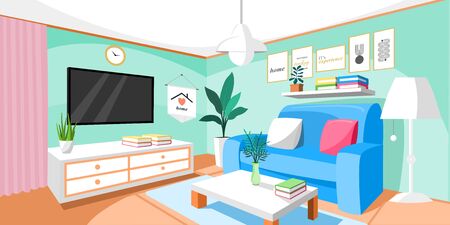Understanding Indian Family Dynamics and Space Constraints
When considering the best kids room layout for learning and play in India, it is essential to first appreciate the unique structure of Indian families and the spatial realities of urban living. Many Indian households, especially in cities like Mumbai, Delhi, and Bangalore, operate within joint family systems where several generations live under one roof. This creates a vibrant environment full of love and support but can also mean limited space for each family member, including children. In such homes, a child’s room often needs to serve multiple purposes—study area, play zone, and restful retreat—within a compact footprint. Recognizing these constraints helps parents make mindful choices about furniture, storage solutions, and multifunctional layouts that cater to both academic growth and playful exploration. By thoughtfully balancing the need for quiet study nooks with open play spaces, Indian families can create nurturing environments that allow their children to thrive despite spatial limitations.
Integrating Cultural Values with Modern Functionality
In India, creating the best kids room layout for learning and play means blending cherished traditions with contemporary conveniences. Indian families often look to vastu shastra—the ancient science of architecture—for guidance on direction, placement, and energy flow within a child’s space. Integrating these principles with modern, multifunctional furniture can help nurture both cultural values and a stimulating learning environment.
For example, vastu shastra recommends placing study desks in the north or east direction to encourage concentration and positive energy. At the same time, today’s parents also seek ergonomic chairs, modular storage, and playful corners that adapt as children grow. Here is a quick comparison of traditional vs. modern features to consider when designing your child’s room:
| Traditional Indian Preferences | Modern Amenities & Furnishings |
|---|---|
| Study desk facing north/east (vastu) | Adjustable desks for ergonomics |
| Natural materials (wood, cotton) | Easy-clean modular shelves & organizers |
| Sacred symbols or prayer corners | Creative play zones with chalkboard walls |
| Earthen or subtle wall colors | Interactive learning tools and tech integration |
| Ample daylight & cross-ventilation (as per vastu) | Flexible lighting for reading and playtime |
By thoughtfully combining these elements, you create a nurturing space where children feel rooted in their heritage while enjoying the benefits of modern design. This harmonious approach not only supports effective study and imaginative play but also instills pride and comfort in every Indian child’s daily life.

3. Designing Multifunctional Zones: Study, Play & Rest
In many Indian homes, especially where space is at a premium, children often share a single room for studying, playing, and sleeping. Creating clear zones for these activities not only helps kids focus but also teaches them organisational skills from a young age. Here are some practical tips tailored for Indian families to maximise every square foot while nurturing your child’s growth.
Smart Ways to Demarcate Spaces
Use simple and affordable solutions like rugs, curtains, or foldable screens to visually separate study corners from play areas. In joint families or compact urban apartments, even a colourful mat can signal “play zone,” while a small desk with a lamp marks the “study area.” Encourage children to tidy up one area before moving to another—this helps them switch mindsets and keeps the room clutter-free.
Focused Study Zone
Create a dedicated study corner by placing a sturdy table near natural light, ideally away from distractions like TV or loud hallways. Use wall-mounted shelves or organisers to keep books and stationery within reach. For smaller rooms, opt for fold-down desks or stackable chairs that can be tucked away after homework time. Add motivational quotes or family pictures on the wall to inspire learning.
Active Play Area
The play zone should be flexible—soft mats or carpets provide a safe surface for floor games and yoga. Store toys in easily accessible bins or baskets under the bed or on open shelves. For creative activities like drawing or crafts, use washable tablecloths or trays that can be quickly set up and cleared away. Remember, bright colours and fun decor help stimulate imagination during playtime.
Cosy Resting Nook
Ensure the sleeping area feels calm and inviting by using soft bedding in soothing colours. If siblings share a bed, consider bunk beds to save space. Hang fairy lights or use bedside lamps for gentle illumination during bedtime stories. Keep this area free from study materials and toys to signal relaxation—this simple boundary supports better sleep habits.
Cultural Touch: Blending Tradition with Modern Needs
Add elements like family photos, traditional art (such as Madhubani paintings), or spiritual symbols to make the space feel uniquely Indian and comforting. These touches reinforce cultural identity while making the room feel special for your child.
4. Maximising Space: Smart Storage and Furniture Solutions
Creating a functional kids room in India often means making the most of limited space while keeping it playful and organised. Indian homes, especially in urban areas, can be compact, so choosing smart storage and multi-use furniture is essential for a seamless blend of learning and play. Here are some practical ideas to maximise every inch:
Space-Saving Furniture Ideas
When selecting furniture, opt for pieces that serve more than one purpose. For example, a traditional diwan bed doubles as a comfortable seating area during the day and transforms into a cosy sleeping spot at night. Foldable desks are another popular solution; they provide a sturdy workspace for study sessions and can be neatly folded away when not in use, freeing up valuable floor space for play.
Popular Multi-Functional Furniture Options
| Furniture Type | Main Benefit | Best For |
|---|---|---|
| Diwan Bed with Drawers | Extra storage under the mattress | Sleeping & storage |
| Foldable Desk | Easily stowed away after use | Study time in small rooms |
| Bunk Beds with Shelves | Maximises vertical space | Siblings sharing a room |
| Modular Storage Ottomans | Doubles as seating & toy box | Toys & quick clean-up |
Creative Storage Solutions for Kids’ Essentials
Keeping toys, books, and school supplies organised is key to maintaining a clutter-free environment that encourages both learning and creativity. Use wall-mounted shelves for easy access to favourite storybooks or educational materials. Colourful baskets or labelled bins can help children sort their toys independently, fostering responsibility from an early age. For school essentials, consider hanging organisers on the back of doors or inside wardrobes—perfect for holding stationery, art supplies, or even tomorrow’s uniform.
Cultural Tip:
In many Indian homes, space under the bed is often used for storing seasonal clothes or extra bedding. Customised pull-out drawers beneath diwan beds make this tradition even more efficient while keeping everything out of sight yet within reach.
By thoughtfully combining smart furniture and creative storage solutions, you can design a kids room that supports both learning and play—even in the cosiest Indian spaces!
5. Lighting & Ventilation: Ensuring Comfort and Health
When designing the best kids room layout for learning and play in India, proper lighting and ventilation are crucial factors that directly impact your childs comfort, focus, and overall well-being. Indias climate—ranging from humid summers to cooler winters—makes it essential to plan for both natural light and fresh air while ensuring safety.
Maximizing Natural Light
Natural sunlight not only boosts mood but also helps regulate sleep cycles. Ideally, position study desks or play areas near windows facing east or north, as these directions provide bright yet gentle daylight. In densely populated urban areas where windows may be limited, use light-colored walls and mirrors to reflect available sunlight. Sheer curtains allow light in while providing privacy and filtering harsh rays during peak summer months.
Ensuring Good Air Flow
Cross-ventilation is key in Indian homes to prevent stuffiness and reduce indoor heat. Place windows on opposite or adjacent walls if possible. Ceiling fans—an essential feature in most Indian households—help circulate air efficiently without excessive energy use. In cities with higher pollution levels, consider installing air purifiers or mesh screens to keep out dust while maintaining airflow.
Safe Electrical Fixtures
Your childs room should have ample lighting for both study and play, especially after sunset. Use LED lights for energy efficiency and choose fixtures with covered bulbs to avoid glare. For safety, install all electrical sockets above a childs reach (about 4 feet from the floor), use socket covers, and avoid overloading extension boards. All wiring should be concealed within walls or protected by casing to prevent accidental touches.
Adapting to Urban Indian Homes
If your family lives in a flat or apartment where space and window size are limited, maximize whatever natural light and airflow you can access. Consider using ventilators above doors or windows to improve circulation. When planning the layout, ensure beds and study zones are placed away from direct sun during hot afternoons but close enough to benefit from morning light.
By focusing on smart lighting and ventilation solutions tailored for Indias unique urban environments and climate, you can create a safe, comfortable, and inspiring room that nurtures both learning and play for your child.
6. Personalising with Indian Touches and Decor
Creating the best kids room layout for learning and play in India goes beyond furniture arrangement and space planning—it’s about infusing the environment with cultural warmth and personal meaning. To make your child’s room truly inviting, consider adding a variety of Indian touches and décor elements that celebrate local traditions and support educational growth.
Incorporate Local Crafts
India boasts a rich heritage of handicrafts from different states. Display colourful Madhubani paintings, Rajasthani puppets, or Kashmiri papier-mâché art on shelves or walls to spark creativity and connect your child to their roots. Handmade block-printed cushions or rugs can add both comfort and vibrant character to the play area.
Use Educational Wall Charts
Decorate the study corner with educational wall charts in English and regional languages. Alphabet posters, number charts, maps of India, or inspirational quotes from Indian leaders will help reinforce learning in a visually engaging way. Choose charts with bright images to keep your child interested and motivated.
Add Bright Colours
Indian homes are known for their bold use of colour. Paint an accent wall in cheerful shades like turquoise, marigold yellow, or lime green, or use colourful curtains and bedding. These lively hues can stimulate young minds and create a joyful atmosphere perfect for both study and play.
Culturally Relevant Elements
Include décor items that reflect festivals, family traditions, or stories from Indian mythology. Hang up fairy lights during Diwali or add a reading nook with folk tales from Panchatantra and Amar Chitra Katha comics. Place soft toys inspired by animals from the Indian jungle or cushions shaped like elephants and peacocks for added fun.
By blending local crafts, educational tools, bright colours, and culturally meaningful elements, you create a nurturing space where children feel connected to their heritage while enjoying a stimulating environment for learning and play.

